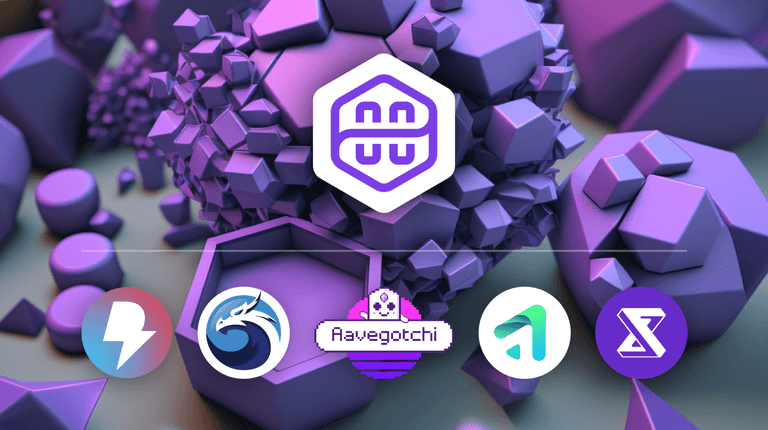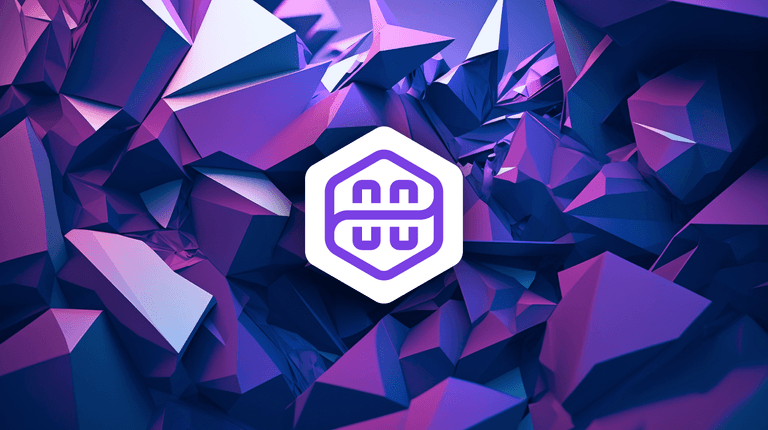Polygon
Browse tokens from Polygon – a layer 2 scaling solution for Ethereum. It offers faster and cheaper transactions, interoperability, and a suite of developer tools.
All You Need to Know About Polygon
Polygon, formerly known as Matic Network, is a scaling solution built on top of Ethereum. It aims to address Ethereum's scalability issues by offering faster and cheaper transactions while maintaining Ethereum's security and decentralization. Developers can use Polygon to build decentralized applications and smart contracts while users can benefit from lower transaction fees and faster confirmation times. Overall, Polygon serves as a bridge between the Ethereum network and other blockchain networks, allowing for interoperability and scalability across the entire ecosystem.
A Brief History of Polygon
Formerly called Matic, the Polygon project was founded in 2017 by four Mumbai-based Software engineers. They recognized the growing demand for scaling, as Ethereum started to experience its first issues. Two years later, Matic held an IEO (Initial Exchange Offering) on Binance, where they sold their newly minted MATIC tokens in an open auction.
During the so-called DeFi Summer of 2020, Matic released its own blockchain. The timing was quite extraordinary, because, with the rising hype for DeFi, the Ethereum mainnet became severely congested, resulting in high fees and slow transactions. By that time an entire DeFi ecosystem started growing on Matic.
In early 2021, Matic changed its name to Polygon. Despite the rebranding, Polygon’s own currency is still referred to as MATIC. In addition to rebranding, at the beginning of 2021, Polygon announced that it would expand its suite of products with its zero-knowledge scaling solution.
The Architecture - How Does Polygon Work?
EVM Compatibility
EVM compatibility allows a blockchain to run smart contracts written in Solidity, the programming language used for Ethereum's smart contracts. This feature facilitates the easy transition of Ethereum-based dApps to other EVM-compatible chains, including Polygon. With EVM compatibility, developers can easily migrate their projects, expanding the potential use cases of both Ethereum and Polygon.
Furthermore, EVM compatibility improves interoperability between chains, allowing for cross-chain compatibility and the development of new decentralized applications that can work across multiple blockchains. It offers developers more flexibility in choosing the blockchain that best suits their needs while maintaining the ability to run their dApps seamlessly.
Sidechains
Sidechain is a separate blockchain, running parallel to the main chain (usually Ethereum). They aim to increase the scalability and affordability of the main chain by executing transactions independently. Sidechains share some characteristics with the main chain but do not inherit its security and decentralization. Additionally, sidechains do not rely on the main chain to provide consensus. They present their own consensus engine, which can be different from that of the main chain.
To connect the main and side chains, a two-way peg system is used. Users lock their assets to an exit contract on the main chain, which automatically mints the same assets on the sidechain. If users wish to return back to the main chain, a similar process is repeated with unlocking the original assets. The Polygon PoS network is an example of a sidechain with a modified Proof of Stake consensus mechanism.
Plasma
Plasma is a scaling solution that works by creating separate chains or "child chains" that can process transactions off the main Ethereum blockchain, which is known as the "parent chain." These child chains can then interact with the parent chain through a process called "committing," where a snapshot of the child chain's state is recorded on the parent chain.
Polygon uses Plasma to create its own child chains that can process transactions faster and more efficiently than the main Ethereum chain. This allows users to move assets between the main chain and the Polygon child chains in a secure and trustless manner.
MATIC token
The MATIC token is the native cryptocurrency of the Polygon network. It is an ERC-20 token that serves multiple purposes within the network, including:
- Payment for transaction fees: MATIC is used to pay for gas fees on the Polygon network, just like ETH is used to pay for gas fees on the Ethereum network.
- Staking: Users can stake MATIC tokens to become validators on the network and earn rewards.
- Governance: MATIC holders can participate in governance proposals and vote on network upgrades and changes.
Tokenomics
The total supply of MATIC tokens is 10 billion, of which 9 billion are already in circulation. Tokens were distributed by a combination of private and public sales, community rewards, and ecosystem development funds. New tokens continue to be added to the circulating supply by rewarding Validators and Delegators with a MATIC staking yield, currently around 5 %.
The staking yield changes depending on the number of stakers and the emission rate of the network. The emission rate is set to decrease slowly, eventually stopping at the total supply of 10 billion MATIC.
Polygon introduced several MATIC burning mechanisms similar to Ethereum. A burn is conducted as a part of every transaction (base fee). Users can also initiate the burn by themselves on the Polygon burn portal. Burning locks the tokens on an address with no private keys, essentially removing them from the supply. Lower supply with steady, or increasing demand results in a higher price per token.
How to use Polygon Network?
Polygon offers various solutions that enable developers and users to leverage the Ethereum ecosystem in a faster, cheaper and more efficient manner. Some of the ways people can use the Polygon network and benefit from it include:
DeFi: Polygon provides a vibrant ecosystem for decentralized finance (DeFi) applications, with lower fees and faster transactions than Ethereum. Users can access various DeFi protocols, including exchanges, lending and borrowing platforms, and yield farming protocols.
Gaming: The Polygon network has a growing gaming ecosystem that enables developers to build games with lower transaction fees and faster transaction times, enhancing the gaming experience.
NFTs: Polygon has seen a significant surge in Non-Fungible Token (NFT) activity, with NFT marketplaces and platforms choosing Polygon over Ethereum for lower gas fees and faster transaction speeds.
DApps: Developers can easily migrate their DApps from Ethereum to Polygon, leveraging the high-speed and low-cost benefits of the network. This is particularly useful for applications that require frequent interactions with the blockchain, such as social media, supply chain management, and gaming.
Cross-chain Interoperability: Polygon's interoperability solutions allow seamless transfer of assets between different blockchains, including Ethereum, BNB chain, Avalanche, Fantom, and other EVM-compatible chains. This enhances the liquidity of assets and enables users to access a wide range of blockchain applications.
FAQs
Is Polygon an Ethereum killer?
Polygon network does not aim to replace or kill Ethereum, but rather to help it scale by moving the transaction throughput elsewhere. Polygon is a separate chain, but it is connected to the Ethereum mainnet via a two-way bridge and could not contain any assets without it.
How to buy Polygon crypto?
There are two main ways to purchase MATIC tokens, the native currency of the Polygon network. One way would be to create an account on a centralized exchange, such as Binance or Coinbase, purchase the token for fiat, and send it to your Ethereum wallet. The second way involves decentralized exchanges (DEXs). You can swap another token for MATIC conveniently in the CoinBrain Trade section, which automatically finds you the best price across all of the DEXs.
Is the Polygon network the same as Matic?
Yes. The Matic network was rebranded as a Polygon in 2021. However, the name of the native token was kept the same.
How to add Polygon network to Metamask?
To add Polygon manually, open your Metamask wallet and expand the network button in the top right corner. From there, you should see a button saying "Add Network". When you click on that button, Metamask will show you some popular networks to add, including the Polygon mainnet.
Is Polygon Matic a good investment?
It is necessary to take into account if the current rising demand for Ethereum scaling solutions will continue to grow. The MATIC token has some utility behind it and is part of a growing DeFi ecosystem. MATIC also has hard capped total supply and implicit burn mechanism, which could potentially drive the price up. Always do your own research before making any investment decisions.



